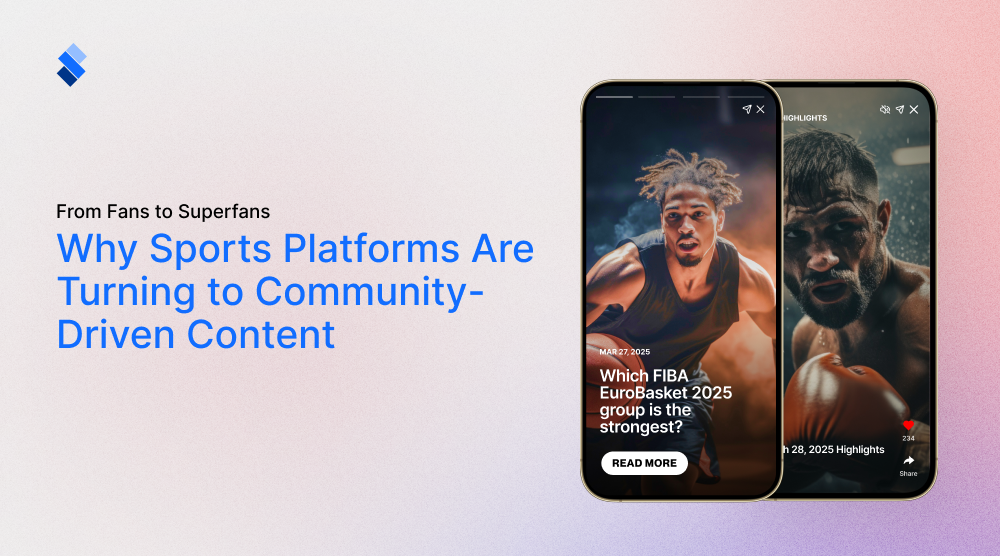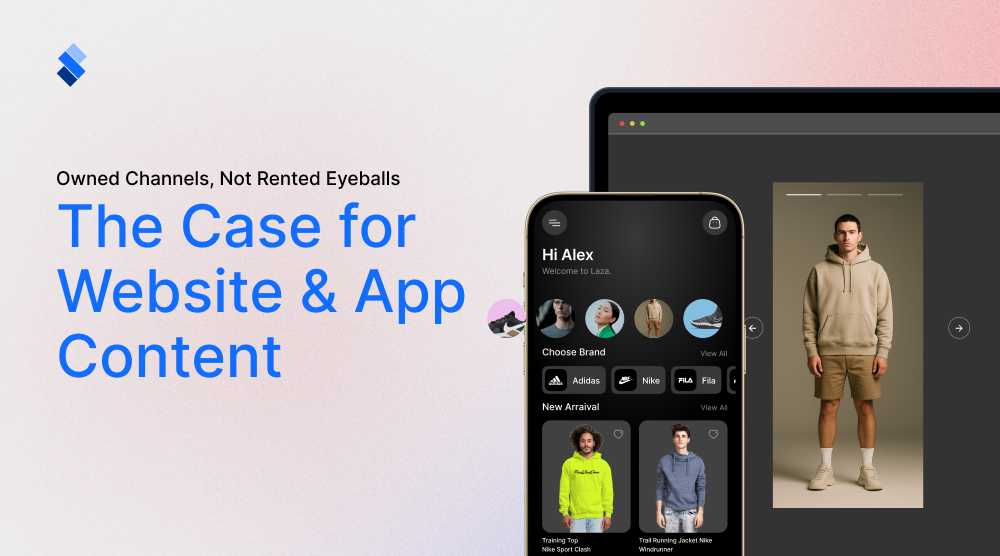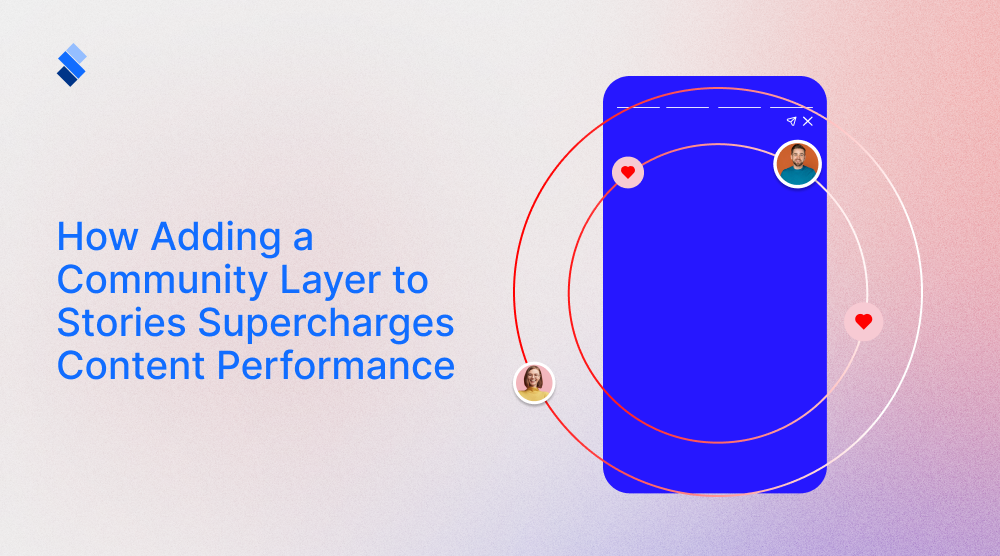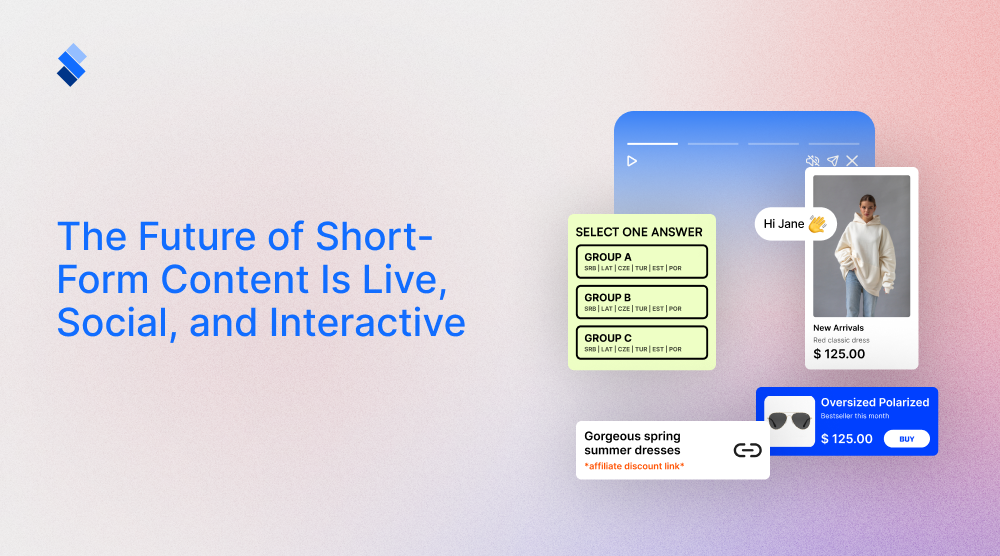From Fans to Superfans Why Sports Platforms Are Turning to Community-Driven Content
Explore why sports platforms are turning to community-driven content. Learn how to leverage fan-driven content, navigate challenges like toxicity, and implement monetization strategies that strengthen loyalty instead of eroding it.

One of the greatest things a sports platform can achieve is building a genuine community with its fans. When you truly engage a sports audience, you can capture their interest, guide their attention, and even generate significant revenue. But it's only by building a real community that you create something a lasting, loyal fan base that will stick with you through wins and losses. This is a big reason why so many sports platforms are turning into community-driven content and why doing so is becoming a top priority for modern sports brands that want to thrive.
Sports and community – A natural connection
Sports are inherently communal. Think about it: from little league to the professional leagues, sports have always built communities. Fans pass down their love for a team to their kids, turning it into a family tradition. Friends bond over a shared team, making fandom a core part of their social lives. The connection between sports and community is deep and natural, especially when you understand how to harness it.

You could even say sports are tribal by nature. This isn't a new phenomenon; it taps into a basic human desire to belong to a group. Being a sports fan is one of the most powerful forms of modern tribalism. Fans don't just watch. They identify. They tie their identity to their team, their players, and the fellow supporters standing next to them.
Take derby matches, for example. Fixtures like Barcelona vs. Real Madrid or Yankees vs. Red Sox. Any real fan will tell you these are more than just games. They're cultural events that spark intense debates, rituals, and raw emotional connections. The passion runs so deep that fans are often willing to spend significant time and money, and sometimes even risk their personal safety, just to be part of it. This level of commitment shows that for many, being a fan is closer to being part of a tribe than simply liking a sports team.
Live events thrive on shared emotion
Another thing that sets sports apart from scripted entertainment like movies or music concerts is its unpredictability. Sports are unscripted drama. The joy of a last-second goal, the heartbreak of a loss, the collective frustration with a bad call… All these emotions are amplified exponentially when experienced live and shared with others.

Digital platforms have become the modern stadium concourse, amplifying these shared emotions in real-time. During events like the Super Bowl, Twitter/X erupts with millions of instant reactions to every play. This seamless blend of live action and online reaction has created a powerful new layer of fandom, showing how effective real-time community tools can be for building a platform's presence.
Sports fans love to participate
It’s crucial to remember that sports fans are far from passive consumers. They are active participants, which is what makes them ideal for community-driven content. They love to debate, predict outcomes, analyze performances, and shape the narratives around the game—just look at any "GOAT" (Greatest Of All Time) or MVP debate. This innate desire to interact and belong is a powerful force. Savvy marketers understand that the best strategy isn't to talk *at* fans, but to create spaces where they can engage *with* each other.
Local and global communities
Another incredible aspect of sports is their unique ability to blend hyper-local pride with a global footprint. The same passion that fuels a small town’s high school football rivalry also powers a worldwide fanbase for global icons like Novak Djokovic. Digital platforms are the bridge, connecting these audiences and allowing a sports brand to achieve worldwide reach, provided its approach is broad enough to resonate everywhere.
Storytelling is collective
If sports were solely about physical competition, they wouldn't hold such a captivating place in our culture. What truly drives fandom are the narratives: the underdog story, the career-ending injury and triumphant return, the decade-long rivalry. These stories are what give sports its lasting flavor and why there are so many sports movies. The game itself is just the setting for a human drama.
And critically, these narratives are co-created. Fans, media, and athletes all play a part in building them through memes, hot takes, and viral moments. This is often a generational tradition, where parents pass down team loyalties, creating lifelong bonds. Platforms that facilitate this storytelling by celebrating history, nostalgia, and tradition deepen engagement immensely. Liverpool FC’s "You’ll Never Walk Alone" anthem is a perfect example; it’s a fan-driven ritual that unites supporters across the globe, strengthening their sense of community.
Sport platforms and real-time community tools
We’ve seen why sports and community content are such a powerful duo. Now, let’s look at where they truly shine in practice.
User-Generated content (UGC)
The importance of User-Generated content (UGC) is magnified in sports. Fans are creating memes, analysis, and hot takes that often get more traction than traditional media coverage. The viral debates on X (formerly Twitter) over topics like "LeBron vs. Jordan" frequently generate more buzz than entire sports talk shows. Platforms that jump into these conversations with their own insights can ride this wave of engagement.

A great way to fuel these fires is by providing new information. Platforms like Reddit (r/soccer, r/nba), Discord, and Strava allow fans to dive deep into stats and tactics. Introducing a fresh piece of data or an overlooked angle can completely reinvigorate a stalled debate, driving more interaction and value.
Integrated live chats
A relatively new tool changing the game is the integrated live chat. These are chat rooms embedded directly into various types of content like videos, articles, or live streams, and they have a incredible ability to turn passive viewers into active participants. This makes consuming sports content a social and addictive experience. In practice, this looks like:
- Real-time reaction to games - Watching a game is fun alone, but experiencing it with thousands of fans in a live chat is a whole different level of excitement.
- Instant debates - Instead of waiting for the post-game show, fans are arguing about a referee's call or a coach's decision as it happens.
- Memes and inside jokes - Live chats are breeding grounds for running gags and viral moments that keep the conversation going long after the game ends.
- Gamification - Integrating polls, prediction games, and fantasy sports updates into these chats can work wonders for boosting both engagement and viewer loyalty.
The Question of Monetization
With all this potential, the question of monetization inevitably comes up. Does making money from your community undermine the very thing you’re trying to build? What options even are there? Let's break it down.
Should You Monetize?
The relationship between monetization and community isn't a simple yes or no. The most accurate answer is this: monetization only hurts community building when it’s done poorly. When executed correctly, it can actually make the community stronger. The entire thing hinges on knowing the difference between extracting value and creating value.
How Monetization Can Hurt the Community
The danger arises when a brand prioritizes short-term revenue over the long-term health of its community. If your strategy feels like you’re mining your fans for cash rather than nurturing them, you’ll quickly erode the two pillars everything is built on: trust and a shared identity.
Imagine if a brand suddenly locked its best historical content behind a paywall. Fans who once had free access would feel penalized. If a team’s social media feed becomes a constant stream of sponsored ads with no authentic interaction, it stops being a community space and turns into a billboard. This breeds resentment. Fans start to feel like they’re just wallets, and the sense of a "shared identity" shatters, replaced by a cold, transactional relationship. This can kill organic discussion and drive your most loyal supporters away.

How It Can Help Build a Community
On the flip side, monetization can be a powerful positive force when you opt for the right monetization strategy. This means your paid offerings are designed to enhance the experience for fans who want more, without making the free experience worse for everyone else.
The key is providing clear, significant value. A perfect example is a premium subscription that offers exclusive behind-the-scenes content: practices, extended player interviews, or deep tactical breakdowns. This doesn't take anything away from the general fan. It simply adds a richer layer for the superfans who crave a closer connection and are willing to pay for it. This approach actually strengthens the community by recognizing different levels of fandom and making the most passionate supporters feel more valued. It creates a new tier of "insiders." Plus, the revenue generated can be reinvested to create better content for everyone, creating a virtuous cycle.
Scalability
With a bit of luck, you’ll likely have a thriving community discussing various topics that you put out. But, keep in mind that a thriving community is not a "set it and forget it" feature. It demands constant attention, moderation, and engagement. It can quickly become a drain on resources if not planned properly. The best solution here is to leverage technology and empower your fans.
- Invest in the Right Tech Stack - Use platform features and third-party tools that aid automation like automated moderation filters, assignment of trusted community leaders, and analytics to track health and engagement.
- Build a Volunteer Program - Identify and empower your most loyal, level-headed fans to become moderators or community ambassadors. They often have more credibility than official brand accounts and can help manage the load.
- Start Small - You don't need to launch a full suite of features at once. Start with one integrated live chat for big games or a single dedicated forum. Nail the experience there first, learn the lessons, and then scale up.
Final Takeaway
Ultimately, for modern sports brands, building a community is no longer a secondary goal but a fundamental strategic priority. The unique, tribal nature of sports fandom, driven by unscripted drama, collective storytelling, and a deep desire to belong, creates a powerful foundation that cannot be replicated through traditional marketing alone. While implementing community-driven content presents real challenges like managing toxicity and monetizing without alienating fans the solutions lie in a philosophy of stewardship, not ownership. By fostering authentic engagement, providing value at every level, and wisely leveraging real-time tools, sports platforms can transform passive audiences into active, loyal communities, ensuring not just short-term revenue but long-term relevance and growth.







